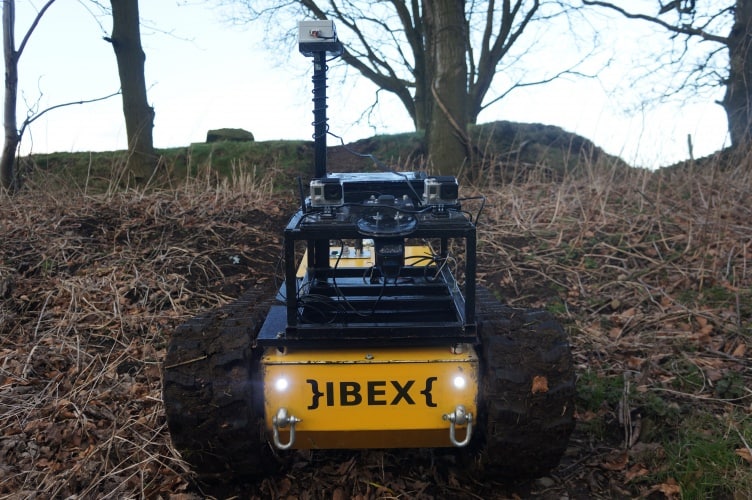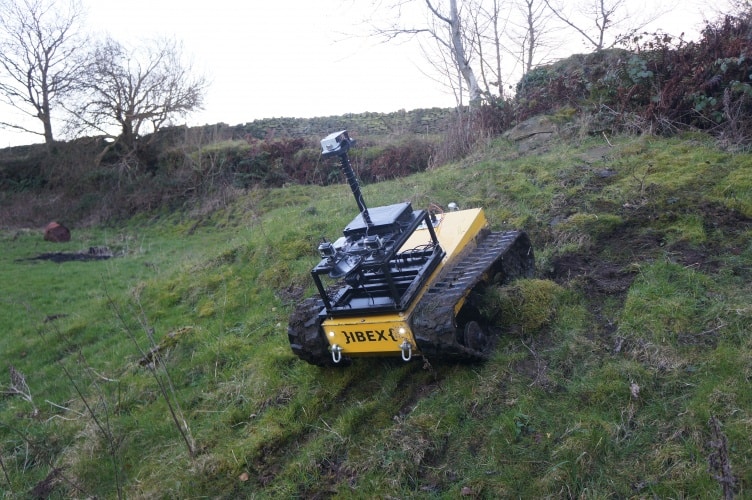
IBEX is designed to operate on remote farmland where it is uneconomical to spray manually, or too dangerous to drive with a tractor or ATV. The initial test will see it operate on steep grassland in dairy and sheep farms.
Using treads to reduce ground pressure and enhance mobility, IBEX is capable of operating on slopes of up to 45 degrees. The 1m long robot employs a combination of sensors and Bayesian machine learning software to navigate autonomously, covering a user-defined area or an optimised route.
A video and data link is always active, allowing a supervisor to intervene if required or if the control systems determine that user input is necessary.

"IBEX is the first agricultural robot designed to tackle extreme agricultural environments such as the Yorkshire hill farms," said Dr Charles Fox, project manager of IBEX at Hunshelf Hall Farm.
"Taking the concept beyond university labs and overcoming extreme terrain mobility limitations, we designed and built IBEX to military standards, to go where other vehicles can't operate and to tackle a real world problem affecting many farmers around the UK.”
The project is co-funded by the AgriTech Catalyst of Innovate UK, with the robot developed by a consortium of SMEs consisting of Hunshelf Hall Farm, G32 Technologies Ltd and Digital Concepts Engineering.

According to the consortium, the 41,000 sheep and 17,000 dairy farms in the UK cost approximately £1,000 each per year to spray manually, averaging 140 acres per farm. With the introduction of the new living wage this figure is set to rise, and the team behind IBEX says many farmers can now not justify the cost of spraying at all. IBEX will cost roughly the same as an ATV, making it affordable to farmers, say its backers.
While these first tests will focus exclusively on weed killing, the IBEX system is also capable of carrying alternative heavy payloads and performing other farm tasks, operating for up to a day away from its base. The trials are set to conclude later this year.




Virgin Atlantic’s Flight100 saved 95 tonnes of CO2 in first SAF flight
LOL a time-honoured unit of volume measurement,, just as large <i>AREAS</i> are expressed as multiples of the size of Wales … or renewable energy...